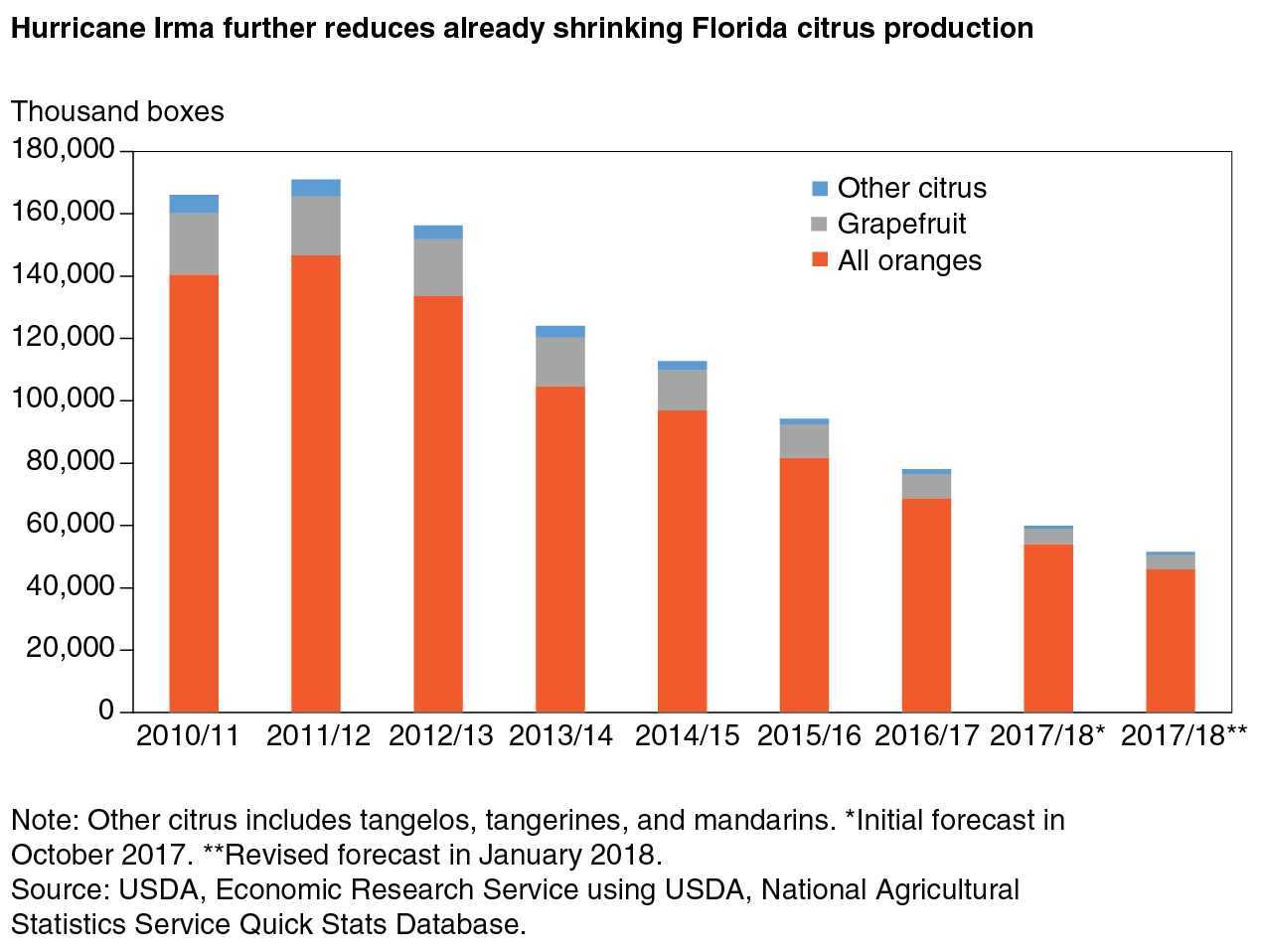
Hurricane Irma Hits Florida’s Agricultural Sector
- by Jennifer K. Bond and Agnes Perez
- 2/5/2018
On September 10, 2017, Hurricane Irma made U.S. landfall on Cudjoe Key, FL. Despite weakening as it moved up the Florida coast, Irma’s high winds and damaging rains affected a large swath of the State, including key citrus and winter vegetable production areas. The Florida Department of Agriculture and Consumer Services estimated that total agricultural losses attributable to Hurricane Irma could reach $2.5 billion. The citrus crop was particularly hard hit as the hurricane knocked down ripening fruit, uprooted trees, and flooded citrus groves. Further, fruit that remains on hurricane-weakened trees is at increased risk of dropping. Before the hurricane, 2017/18 marketing year citrus production forecasts indicated lower production compared to the 2016/17 marketing year. Early projections reflected an ongoing contraction driven by the spread of citrus greening disease, a bacterial disease that can ultimately kill orange trees. In October, the USDA, National Agricultural Statistics Service forecast post hurricane Florida citrus production at nearly 60 million boxes, a year-over-year decline of 23 percent. In January 2018, a clearer picture of the hurricane’s effect on citrus production emerged, and Florida’s production was trimmed by an additional 8.3million boxes, to under 52 million.
Unlike citrus growers, Florida’s winter vegetable farmers appear to have been spared the full brunt of the storm’s potential impact. Only a small fraction of winter vegetable fields were planted when Hurricane Irma passed through major production regions in the south and central portions of the State. However, Florida is a key source of tomatoes, bell peppers, green beans, mushrooms, and cucumbers in late fall and winter months. In 2016, the farm value of Florida’s vegetable production exceeded $1.191 billion, behind only California and Arizona. Following the hurricane, electrical service was disrupted, and a portion of winter vegetable fields remained flooded for several days or more, delaying the production and distribution of celery, green beans, and mushrooms, among others. The mushroom-growing process depends heavily on electricity to maintain a proper growing environment. A lack of electricity in the hurricane-affected area is reported to have compelled affected mushroom farms to dispose of crops in all stages of production. While causality cannot be definitively established, prices for 8-ounce packages of white mushrooms in Southeast grocery stores spiked immediately following Hurricane Irma when supplies from Florida were most acutely disrupted.
This article is drawn from:
- Perez, A., Ferreira, G. & Minor, T. (2017). Fruit and Tree Nuts Outlook: September 2017. U.S. Department of Agriculture, Economic Research Service. FTS-365.
- Parr, B., Bond, J.K. & Minor, T. (2017). Vegetables and Pulses Outlook: October 2017. U.S. Department of Agriculture, Economic Research Service. VGS-359.


